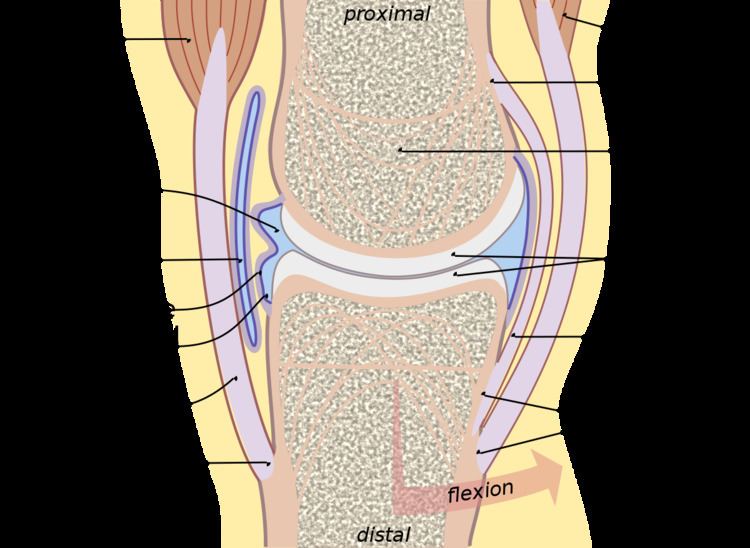Latin bursa synovialis Code TH H3.03.00.0.00039 TA A03.0.00.039 | MeSH Bursa,+Synovial Dorlands/Elsevier b_27/12201211 FMA 9692 | |
 | ||
A bursa (plural bursae or bursas) is a small fluid-filled sac lined by synovial membrane with an inner capillary layer of viscous synovial fluid (similar in consistency to that of a raw egg white). It provides a cushion between bones and tendons and/or muscles around a joint. This helps to reduce friction between the bones and allows free movement. Bursae are found around most major joints of the body.
Contents
Structure
There are four types of bursa: adventitious, subcutaneous, synovial, and sub-muscular. Among these, only adventitious is non-native. When any surface of the body is subjected to repeated stress, an adventitious bursa develops under it. Examples are Students' elbow and bunion.
Clinical significance
Infection or irritation of a bursa leads to bursitis (inflammation of a bursa). The general term for disease of bursae is "bursopathy."
Etymology
Bursa is Latin for purse, so named for the resemblance of an anatomical bursa to a purse. Bursae or bursas is its plural form.
